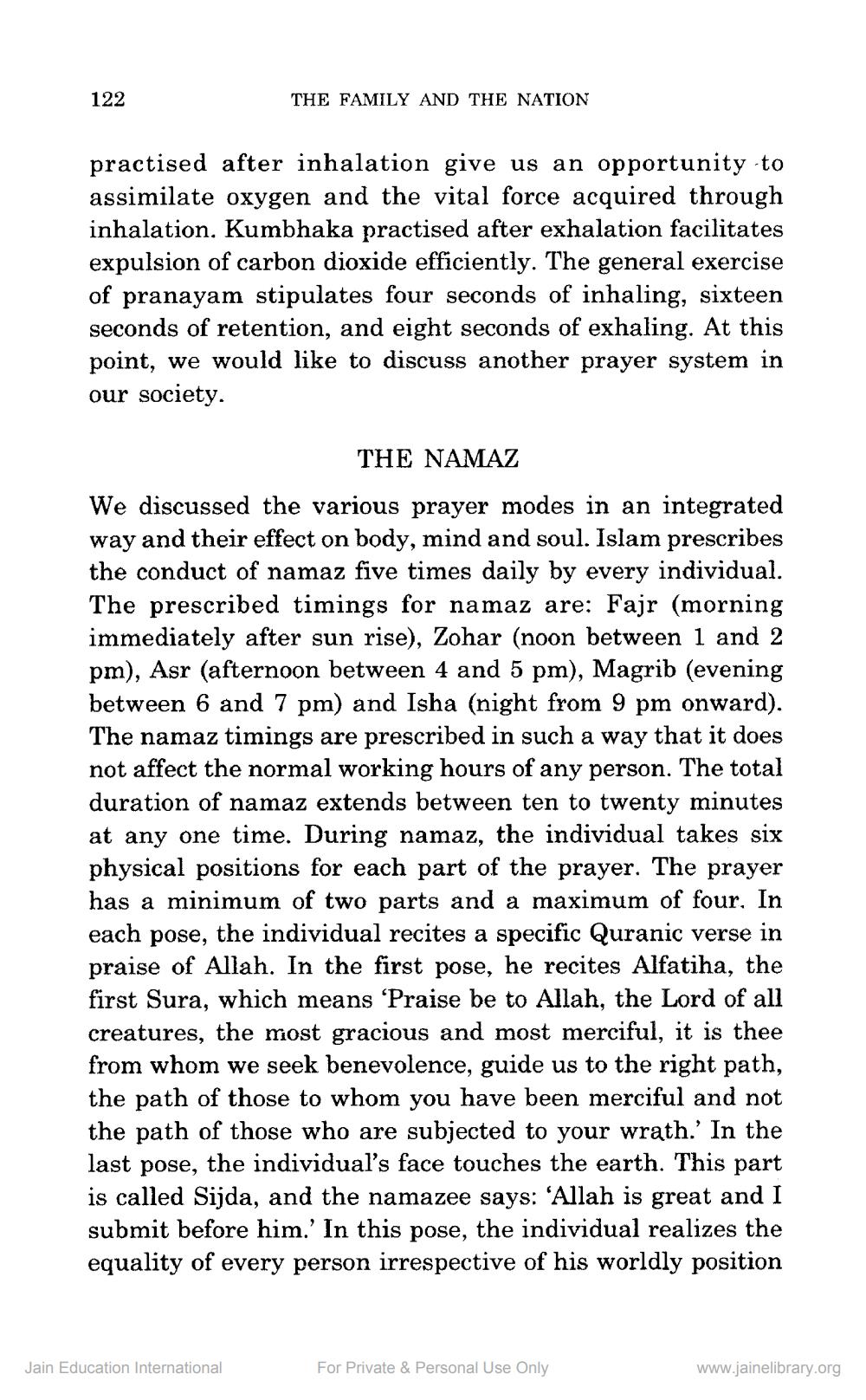________________
122
THE FAMILY AND THE NATION
practised after inhalation give us an opportunity to assimilate oxygen and the vital force acquired through inhalation. Kumbhaka practised after exhalation facilitates expulsion of carbon dioxide efficiently. The general exercise of pranayam stipulates four seconds of inhaling, sixteen seconds of retention, and eight seconds of exhaling. At this point, we would like to discuss another prayer system in our society.
THE NAMAZ
We discussed the various prayer modes in an integrated way and their effect on body, mind and soul. Islam prescribes the conduct of namaz five times daily by every individual. The prescribed timings for namaz are: Fajr (morning immediately after sun rise), Zohar (noon between 1 and 2 pm), Asr (afternoon between 4 and 5 pm), Magrib (evening between 6 and 7 pm) and Isha (night from 9 pm onward). The namaz timings are prescribed in such a way that it does not affect the normal working hours of any person. The total duration of namaz extends between ten to twenty minutes at any one time. During namaz, the individual takes six physical positions for each part of the prayer. The prayer has a minimum of two parts and a maximum of four. In each pose, the individual recites a specific Quranic verse in praise of Allah. In the first pose, he recites Alfatiha, the first Sura, which means 'Praise be to Allah, the Lord of all creatures, the most gracious and most merciful, it is thee from whom we seek benevolence, guide us to the right path, the path of those to whom you have been merciful and not the path of those who are subjected to your wrath.' In the last pose, the individual's face touches the earth. This part is called Sijda, and the namazee says: 'Allah is great and I submit before him.' In this pose, the individual realizes the equality of every person irrespective of his worldly position
Jain Education International
For Private & Personal Use Only
www.jainelibrary.org




